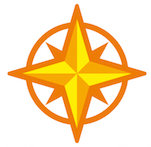 This nonlinear optical wave guide converts the wavelength of a single-photon signal to a common telecom wavelength. (Photo: L.A. Cicero/Stanford News)
This nonlinear optical wave guide converts the wavelength of a single-photon signal to a common telecom wavelength. (Photo: L.A. Cicero/Stanford News)
- Written by Stanford News
Stanford physicists set quantum record by using photons to carry messages from electrons over a distance of 1.2 miles
FeaturedStanford physicists have extended the distance they can demonstrate quantum communications. Stanford News reports on progress using photons to communicate between two electrons through more than a mile of fiber optic cable, an important step toward proving the practicality of quantum networks.
Their paper in Nature Communications describes how Stanford Postdoctoral scholar Leo Yu and a team of scientists including Professor Emeritus Yoshihisa Yamamoto have correlated photons with electron spin over a record distance of 1.2 miles.
"Electron spin is the basic unit of a quantum computer," Yu said. "This work can pave the way for future quantum networks that can send highly secure data around the world."
Read the full article at Stanford News.
Visible Legacy Comment
This project builds on a previous project sponsored by the Japan Society for the Promotion of Science investigating quantum cryptography. Now that this communication effect has been extended to a "campus-wide" size in distance it brings quantum networks closer to reality. The Yamamoto Group continues investigations in quantum information science. Dr Yu is joining a new group headed by Tony Heinz, a scientist known for exploring the properties of nanoscale materials and developing important new tools for that exploration. See the latest research from the ecosystem by exploring the map below!
updated 161003.1
Additional Info
-
Navigator:
 Explore the map in Navigator
Explore the map in Navigator - Widget:
- Caption: The Yamamoto group studies quantum information science, with an experimental emphasis on light-matter interactions in semiconductors. Research topics include the optical control of spin qubits, engineering large-scale quantum computing systems, and the condensed matter physics of exciton-polaritons.
Related items
- Scientists Get to the Bottom of COVID’s Worst Pediatric Complication
- HHS Team at NIH Honored with Technology Transfer Innovation Award by Federal Laboratory Consortium
- WSU-inspired national gene-editing task force begins work
- Multi-Tasking Wearable Continuously Monitors Glucose, Alcohol, and Lactate
- Privacy-preserving camera captures only the objects you want
